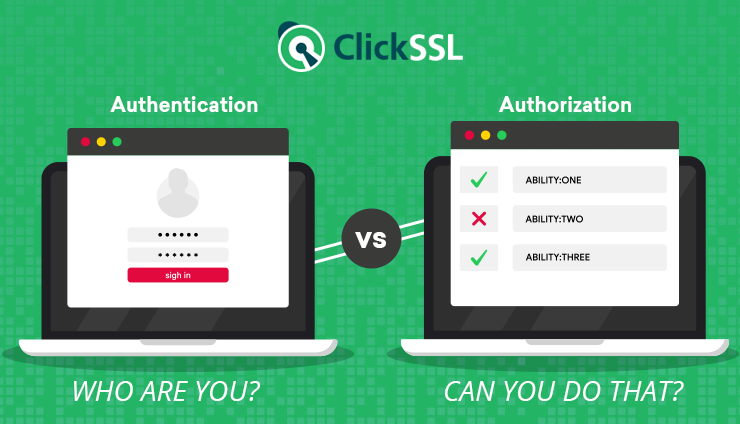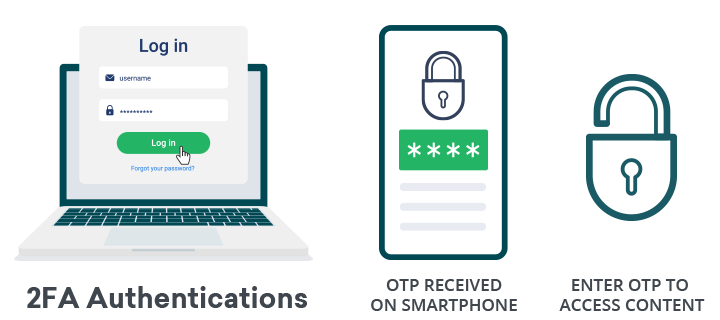Authentication vs. Authorization – Authentication verifies the identity user and validates it, while Authorization allows the user to access the system.
Data protection is one of the most vital business activities. The reason is simple: With the rising use of smartphones and better internet connectivity, more people are exposed to cyberattacks.
According to ITRC, 98.2 million people were affected by cyberattacks in the first half of 2021. This report also suggests that cybercriminals are now shifting their attacks on internet users more susceptible to such data thefts.
While this looks problematic, businesses have already adopted advanced technology to fight such attacks. Two of the most effective security systems every business employs are user authentication and authorization for data access. However, there has been a debate among several businesses on authentication vs. authorization.
So, here we are with a comprehensive differentiation between authentication and authorization. Let’s start with what is an authentication process.
What Is Authentication?
Authentication is the process of determining the user’s identity for data access or even whether a developer publishes software or an app. The user identity authentication process is a standard among several businesses and enterprises.
For example, Google recently made it mandatory for its users to use a two-factor authentication process to access their services. So not just the 150 million users on Google, but creators on Youtube will also have to use two-factor authentications.
Here, it is essential to understand that the authentication process is restricted to the user’s identification and further validation process with permission to access content depends on the authorization process.
The difference between authentication vs. authorization lies in the execution of the process. For example, authentication works on a macro level where you will determine whether a user is authenticated to grant the data access or not.
The authentication process validates whether users’ credentials match the ones in the database. Once the validation is executed, users get access to data or content, where authorization comes into play. It works on a micro-level and defines what type of access a user will reach after proper authentication.
We now know what authentication is and how it differs from authorization, so let’s understand how it works.
How Does Authentication Work?
Knowing how the authentication process works is quintessential to understanding the difference between authentication and authorization. Conventionally the authentication process was executed through the login credentials of users validated through a local authentication server. This information is further matched with the one stored in the database for validation.
However, with HTTPS-based encryptions, this practice is of no use. HTTPS protocol execution is stateless, and no information once the authentication is done for further interactions. So, each time a user interacts with the system, they need to authenticate, which will be a tedious and time-consuming process.
The answer to this problem was token-based authentication. The authenticating system provides a signed token to authenticate users. At the same time, factor-based authentication is another approach commonly used by businesses and enterprises to authenticate users.
An authentication factor is an approach to using information or data that is intimate to users for the authentication process. For example, the 2FA or two-factor authentication process allows you to authenticate users through an OTP or One-time-password, SMS messages, and even an authenticator link.
Several organizations have adopted the Factor authentication process over the years, and one such example is Google. It has now started making 2FA mandatory for several services, including Youtube, where creators will need factor authentication to log in.
Now that we have discussed the authentication side of the authentication vs. authorization
What Is Authorization?
The authorization process helps businesses employ a security policy and define access for users. After the authentication process, a user’s identity is validated, and further, the authorization process uses predefined security policies to determine,
- Specific user privileges
- Total time of access
- Database or storage allocations
- Access for specific file directories
When a user tries to login into a system, the authorization process ensures that proper permissions are granted for access to data.
Once user credentials are validated, the system admin or an automated authorization orchestrator will check if the user is subscribed to a streaming plan and determine the subscription tier.
Based on the subscription tier, content access is provided to the user. In addition, it uses edge authentication services with token-agnostic authentication systems to ensure reliable, scalable, and flexible operations.
Now that we know what it is authorization let’s discuss how does it work?
The authorization process differs according to the purpose for which it is used. For example, an authorization process for user access to content differs from the authorization of an online transaction.
During a financial transaction, 2FA is commonly used to authenticate users. After determining the user’s identity, a payment gateway authorizes the transaction after verification from the user’s bank or other financial institution.
Similarly, the system validates the user’s privileges according to the security policies and grants permission for content access authorization. Here, the authorization process depends on a specific set of guidelines for user access.
Now that we have discussed all the aspects of authentication vs. authorization, here is a side-by-side differentiation.
Difference Between Authentication vs. Authorization
We created a table on how authentication is different from authorization to easily understand.
| Authentication | Authorization |
|---|---|
| Determines the identity of users through different types of authentication methods | Enables data or content access for users based on a specific set of security policies |
| The user is an active participant in the process | Most of the process stays in the backend, and users have no part. |
| Requires user’s device and login credentials | Requires authentication process to be executed first. |
Conclusion
The debate of authentication vs. authorization is bound to continue unless there is a clear understanding of how they work. Here, we have shed some light on how authentication and authorization are different yet necessary for users’ secure access to content, data, or financial transactions. Understanding the difference will help you design your security systems better and enhance data protection.
Recommended Reading:


